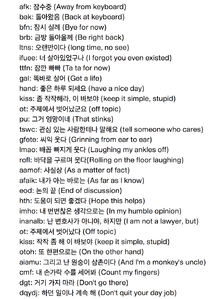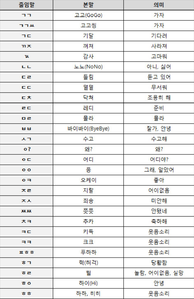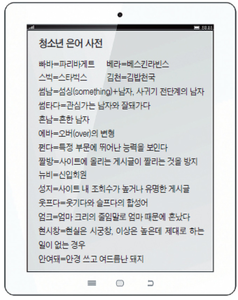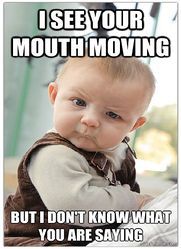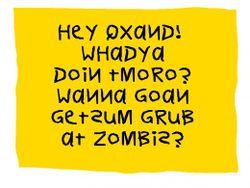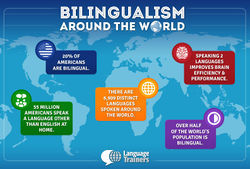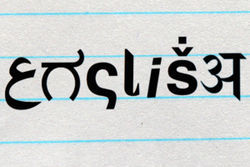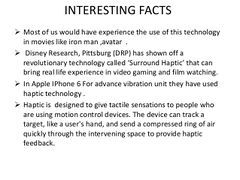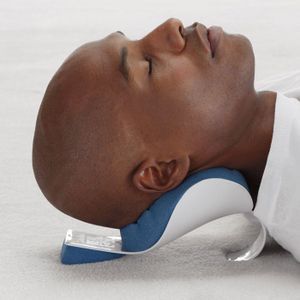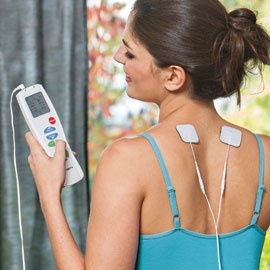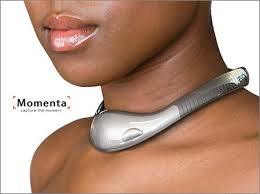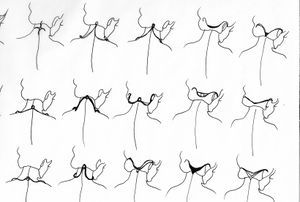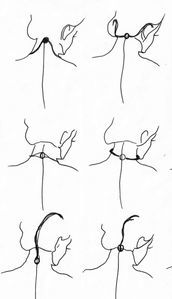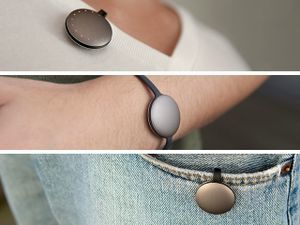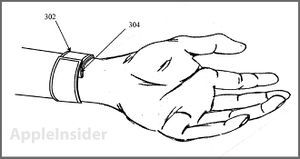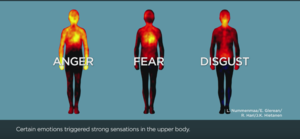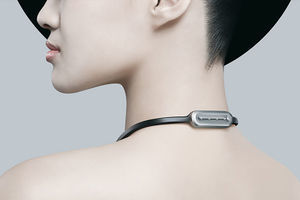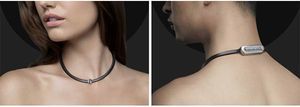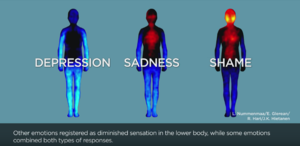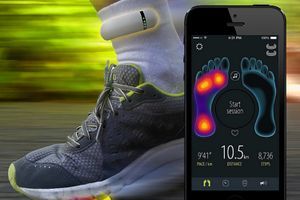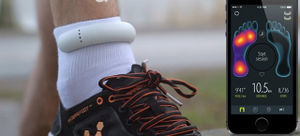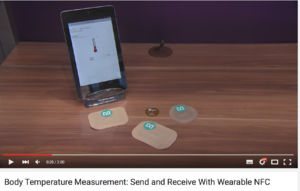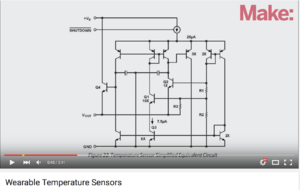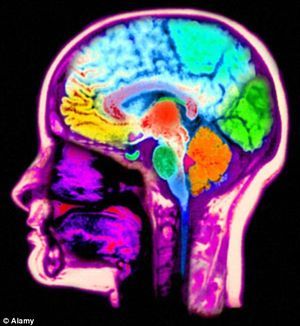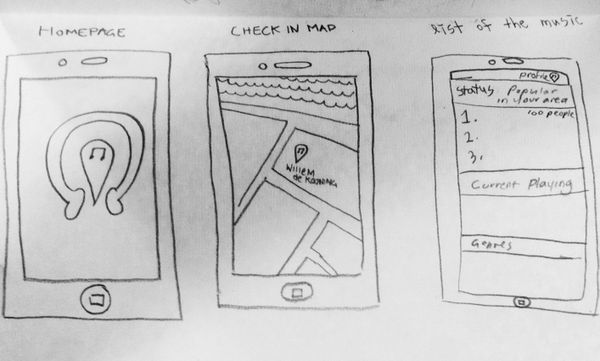DC
Contents
- 1 Project Digibod
- 2 First idea's with group of 4
- 3 Week 1 Digital Culture
- 4 First week Idea
- 5 Week 2 Digital Culture
- 6 Link to interesting sites
- 7 Week 3 Digital Culture
- 8 Task List Digital Culture week 3
- 9 Feedback Gabriella 24-09-2015
- 10 Week 4 Digital Culture
- 11 Week 5 Digital Culture
- 12 Week 6 Digital Culture
- 13 Research week 7 Digital Culture
Project Digibod
First idea's with group of 4
Group: Juliah Rahliff, Clair Lee, Carly Muller and myself. Each participant in the group has a different discipline, we want to use the differences of these to create a diverse, big project. The different studies are:
Audiovisual (Clair Lee) Graphic (Juliah Rahliff) Fashion (Carly Muller) Spatial (Emma Rijk)
Week 1 Digital Culture
First week Idea
Group: Juliah Rahliff, Emma Rijk, Carly Muller and myself. Each participant in the group has a different discipline, we want to use the differences of these to create a diverse, big project. The different studies are:
Audiovisual (Clair Lee) Graphic (Juliah Rahliff) Fashion (Carly Muller) Spatial (Emma Rijk)
The overall topic will be; 3 generations in digital culture, from the generation before us, to our generation and the generation in the future.
Research Eunyhang Clair Lee : the changes of languages in three generations.Lots of abbreviations and slangs are used by young generation because of the internet.
After talking with the group of 4
So I am wondering how the language will be evolved in future generation.
And of course many older generation can't understand "the abbreviations and slangs".
So maybe in future some engineers will invent "the device" which can translate the abbreviations.
The overall topic will be; 3 generations in digital culture, from the generation before us, to our generation and the generation in the future.
My Research:
The medium and the way the digital culture is used becomes more and more universal. From being priviliged to have a computer to asking what kind of computer someone has. By now there are only two big competitors in the computer branche; apple and windows. It is normal to have a phone, it simply depends on what kind of phone... You have a Iphone? Really cool, you have a Nokia phone? Not so impressive... The tools we use and the branding behind these become more and more important.
Simply because of the fact that every person can buy a tool to communicate digitally with, wich only leaves the question behind what tool that would become.
From my observation point:
I have done some observation in my neighbourhood, outside the daycare. I have seen the parents pick up there children. First of all, almost every parent is busy on their phone as they are waiting for the children to come out. When the children come out, they don't have a digital device on them, but they will see the parent with the phone so most kids immediatly start begging their parents for their phone.
What also stands out is that some parents make pictures of their children coming out of school, besides the fact that it is a normal school day and nothing is special about it, it annoys the children who obviously share my opinion about these pictures being unnessecary. The children don't feel the urge to portray themselves a certain way through digital media.
Week 2 Digital Culture
This week we have decided to continue the project in two duo's. The duo that I will be in is with Clair.
We have decided to focus on the evolution in language. Primarly the changes affected through digital media. With our backgrounds of Spatial Design and audiovisual design we want to make a project that allows us both To use our disciplines.
We want to lose the given norm of language as a flat, written, communicative tool and see how we can unite any nationality without difficulty to use 'our language tool'.
After Some research for reference projects, Clair and I came up with the subject 'digital body language.
The emoticon image: The birth of emoticons show a flaw of human conversating on the internet, because we gather A big part of our information we gain from contact through body language, the digital world made plase for emoticons. These small symbols charaterize the feeling or expression that comes with a written text.
Link to interesting sites
- http://www.newbreedmarketing.com/blog/sales/digital-body-language
- http://www.wsj.com/articles/what-the-world-will-speak-in-2115-1420234648
- https://www.washingtonpost.com/news/worldviews/wp/2015/09/24/the-future-of-language/
Week 3 Digital Culture
Research 01-10-2015
Haptics is any form of interaction involving touch (from Greek ἅπτω = 'I fasten onto, I touch').
It can mean:
- Haptic communication, the means by which people and other animals communicate via touching
- Haptic perception, the process of recognizing objects through touch
- Haptic poetry, a liminal art form combining characteristics of typography and sculpture
- Haptic technology, technology that interfaces with the user through the sense of touch
- Haptics may also refer to touch and tactile.
Source: [1]
Ted inspirational talk about haptics and technology
Evolving the basic emotions into the haptic device. The seven basic emotions are:
- anger
- fear
- disgust
- contempt
- joy
- sadness
- suprise
Person touches device > device registrates> temperature of touch > movement of touch > pressure of touch > pheromones/ scents The information will be send through in direct information, for instance: A cold, shaking, soft touch, with a body scent
Research about the most sensitive spot of a body: I do this research because i want to find out what the best part on the body is to design the device for. Since the device will send different data that is based on touch it is important that the body part is able to pick these signs up.
I conclude out of these sources and other articles that the back of the neck is the most sensitive spot.
With the right stimulation on this point:
- Helps with colds
- Makes your brain sharper
- Better lung function
- Better sleep
- Helps the stomach
- Helps the thyroid
Requirements for the digi bod:
- - easy to wear
- - discrete
- - covers the special back in the neck spot.
- - futuristic esthetics
- - environmental friendly
- - a communication point sending messages through vibrations.
Task List Digital Culture week 3
Clair:
- Research about situations when the device is of use.
how to be used http://www.ohmynews.com/NWS_Web/View/at_pg.aspx?CNTN_CD=A0002124330
develope of the wearable market
- Research about different communication ways through different senses.
everyting of the wearable devices http://search.naver.com/search.naver?where=nexearch&query=%EC%8A%A4%EB%A7%88%ED%8A%B8%EB%B0%B4%EB%93%9C+%EC%8A%A4%ED%8A%B8%EB%A1%9D+%EC%A0%84%EB%8B%AC&sm=top_sly.hst&fbm=1&acr=5&ie=utf8
- Research/inspiration about the visualisation of the object.
- Research about body language 'most needed' in the device.
Feedback Gabriella 24-09-2015
- Find a user - Situations were this device is necessary - Fictional? - How will this look like? - Visualise object in everyday situations
Week 4 Digital Culture
Feedback from presentation:
- Think about interface
- Find more unconventional ways from heartbeat, temperature, movement
- Give the object shape
- How does this information communicate with the user?
Name of project: Digi Bod
- Body language through digital device
- Fictional device
- Criticizes digital communication
- Showing the need to society
- Using the device in nessecary situations
- Growing market in wearable devices
- Heartbeat monitoring
- Sincere, honest
Situations the device is most necessary in:
- Long distance relationships
- Long distance interviews
- People you don't know but need to trust
- Difficult conversations
The device measures:
- Temperature
- Movement
- Heartbeat
Week 5 Digital Culture
Clair:
- Research about situations when the device is of use.
- Research about different communication ways through different senses.
- Research/inspiration about the visualisation of the object.
- Research about body language 'most needed' in the device.
Emma:
- Research about situations when the device is of use.
- Research about different communication ways through different senses.
- Research/inspiration about the visualisation of the object.
- Research about body language 'most needed' in the device.
Week 6 Digital Culture
We want to combine haptic and seismic communication.
Definition of seismic communication: [9]
The device will be able to gather the information of the person wearing the gadget and then sending the Result of the information (which emotional state you are in) by seismic/ haptic communication. This will look like a gadget in the back of the neck sending vibrations that communicate.
To find out what emotional state the person the next link gives the scientific research that shows body temperature translated Into a emotional state. [blah.kr/175]
---Emotion and body---
Unlike thoughts, the emotions don’t live entirely in the mind, they are also associated with bodily sensations.
A well known example is when we fall in love with someone: we report getting ‘butterflies in our stomach’.
A recently published study focused on where people experience different emotions in the body (read the full article here).
Thanks to this new study, for the first time we now have a map of the links between emotions and bodily sensations.
http://positivepsychologyprogram.com/link-happiness-and-bodily-sensations-visuals/
BODILY MAPS https://www.youtube.com/watch?v=cZP_I6NkQb4
---upper body: neck wearable device---
measure the upper body temperature. sending emotion and recieving the other's
---downside body:anklet wearable device---
---How can the wearable device measure the body temperature ---
HOW TO MAKE https://www.youtube.com/watch?v=N9gW5cmOb78
---Research 01-10-2015---
Haptics is any form of interaction involving touch (from Greek ἅπτω = 'I fasten onto, I touch').
It can mean:
- Haptic communication, the means by which people and other animals communicate via touching
- Haptic perception, the process of recognizing objects through touch
- Haptic poetry, a liminal art form combining characteristics of typography and sculpture
- Haptic technology, technology that interfaces with the user through the sense of touch
- Haptics may also refer to touch and tactile.
Source: [10]
Ted inspirational talk about haptics and technology
Evolving the basic emotions into the haptic device. The seven basic emotions are:
- anger
- fear
- disgust
- contempt
- joy
- sadness
- suprise
Person touches device > device registrates> temperature of touch > movement of touch > pressure of touch > pheromones/ scents The information will be send through in direct information, for instance: A cold, shaking, soft touch, with a body scent
Research about the most sensitive spot of a body: Emma did this research because She want to find out what the best part on the body is to design the device for. Since the device will send different data that is based on touch it is important that the body part is able to pick these signs up.
I conclude out of these sources and other articles that the back of the neck is the most sensitive spot.
With the right stimulation on this point:
- Helps with colds
- Makes your brain sharper
- Better lung function
- Better sleep
- Helps the stomach
- Helps the thyroid
Requirements for the digi bod:
- - easy to wear
- - discrete
- - covers the special back in the neck spot.
- - futuristic esthetics
- - environmental friendly
- - a communication point sending messages through vibrations.
Echoic Memory -- Echoic memory is one type of sensory memory process. Specifically, echoic memory is sensory memory associated with auditory information received from the environment. The term echoic stems from the word echo, which is in reference to the brief echo, or the reverberation of sound that is transmitted neurologically via this type of sensory memory.
Case Study: Clive Wearing
British conductor and musician Clive Wearing contracted a brain infection in 1985. He was left with a memory span of only 10 seconds. The infection - herpes encephalitis - left him unable to recognise people he had seen or remember things that had been said just moments earlier. However, despite being acknowledged by doctors as having one of the most severe cases of amnesia ever, his musical ability and much of his musical memory was intact. Now aged 73, he is still able to read music and play the piano and once even conducted his former choir again. Researchers have come to believe they are closer to understanding how musical memory is preserved in some people - even when they can remember almost nothing of their past.
Scientists are trying to understand how amnesiacs can lose all memory of their past life - and yet remember music. The answer may be that musical memories are stored in a special part of the brain. In tests his musical memory was classified as 'normal' - even though the rest of his brain was so badly affected he could not remember the layout of his flat, the Guardian reported.
--- BRAINSTORM ---
An app to share the music memory linked with a particular location. The App would collect music potentially from Spotify or another online music sharing site. By using this App people will begin to appreciate the way in which the identity of a place (eg. neighbourhood) is shaped and evolves with music.
Research week 7 Digital Culture
echoic memory
Echoic memory plays an extremely important part in our every day lives. From the day we are born, we are exposed to symbolic sounds (e.g. from sirens and alarms to atmospheric sounds - waves, wind) that are stored with their meaning in our echoic memory - similar to that of a dictionary. These symbolic sounds are used to assist, inform and in some ways dictate parts of our daily routine. As strong as the iconic sounds in our echoic memory are - when paired with the visual and haptic parts of our memory they become stronger. Our project aims to test and question the strength of one's echoic memory sense.
We began thinking about the way individuals listen out for particular sounds. When we are familiar with a certain order of sounds it can tell us a lot about the situation we are in or experiencing. This can range from the simplicity of listening out for the sound of the buzzer at the traffic lights to more complex, individual circumstances. For example after a few weeks of living next-door to my neighbour I was able to put together a timeline of sounds that I would expect to hear when he either arrived or left his apartment.
When an individual is exposed to a number of purposely generic, artificial sounds (e.g. footsteps) that do not necessarily follow a cohesive order are they still able to pick up on the general gist of what is occurring? Our interactive compilation of different sound pieces tests this theory. It invites the audience to make up their own sense of the actuality of the sound piece and in turn question how strong and how personal an individuals echoic memory is on it's own.
